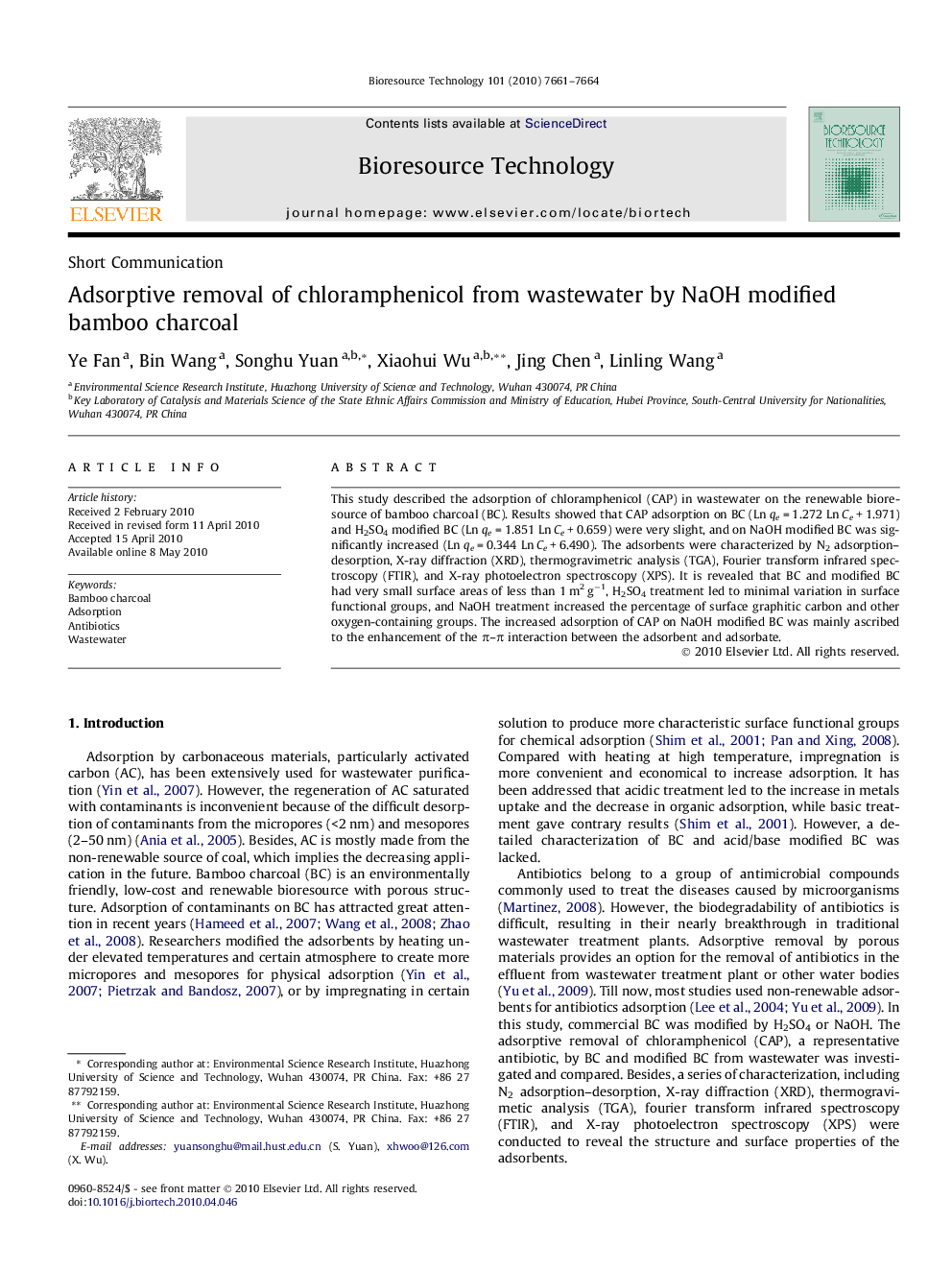| Article ID | Journal | Published Year | Pages | File Type |
|---|---|---|---|---|
| 682865 | Bioresource Technology | 2010 | 4 Pages |
This study described the adsorption of chloramphenicol (CAP) in wastewater on the renewable bioresource of bamboo charcoal (BC). Results showed that CAP adsorption on BC (Ln qe = 1.272 Ln Ce + 1.971) and H2SO4 modified BC (Ln qe = 1.851 Ln Ce + 0.659) were very slight, and on NaOH modified BC was significantly increased (Ln qe = 0.344 Ln Ce + 6.490). The adsorbents were characterized by N2 adsorption–desorption, X-ray diffraction (XRD), thermogravimetric analysis (TGA), Fourier transform infrared spectroscopy (FTIR), and X-ray photoelectron spectroscopy (XPS). It is revealed that BC and modified BC had very small surface areas of less than 1 m2 g−1, H2SO4 treatment led to minimal variation in surface functional groups, and NaOH treatment increased the percentage of surface graphitic carbon and other oxygen-containing groups. The increased adsorption of CAP on NaOH modified BC was mainly ascribed to the enhancement of the π–π interaction between the adsorbent and adsorbate.
